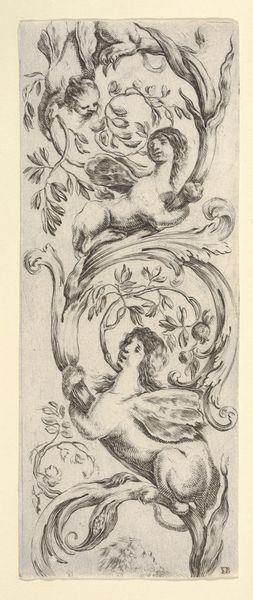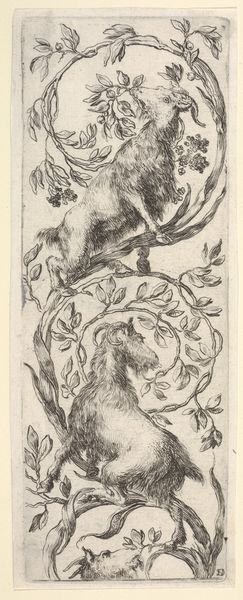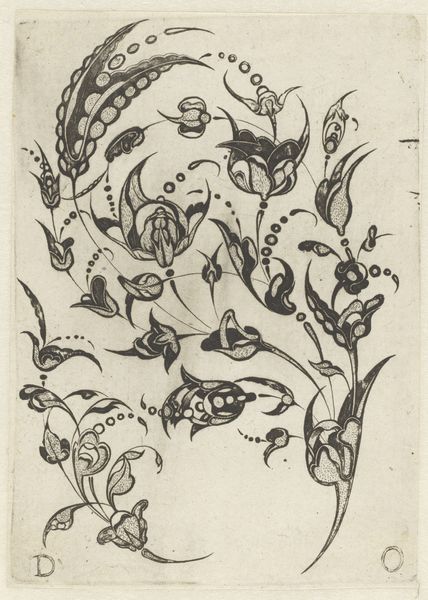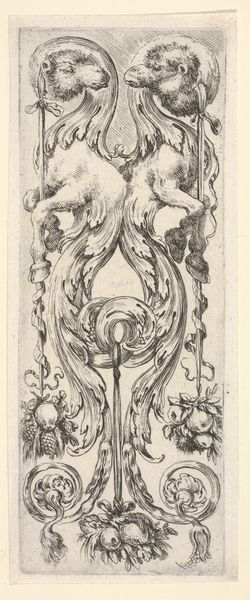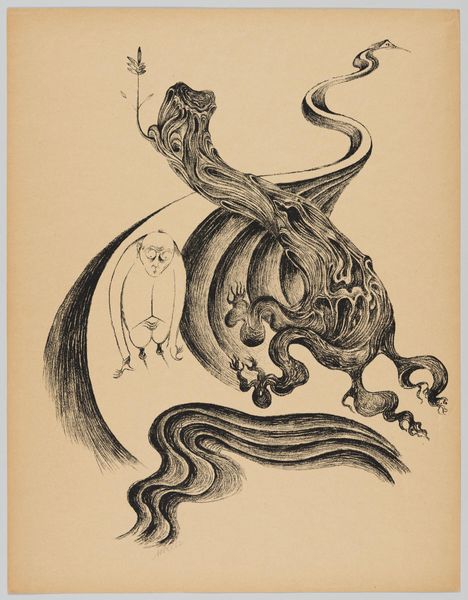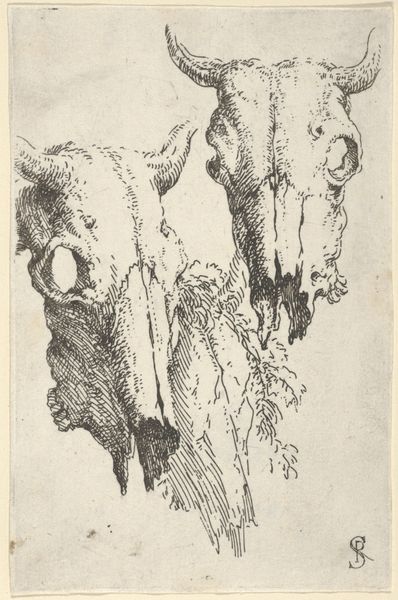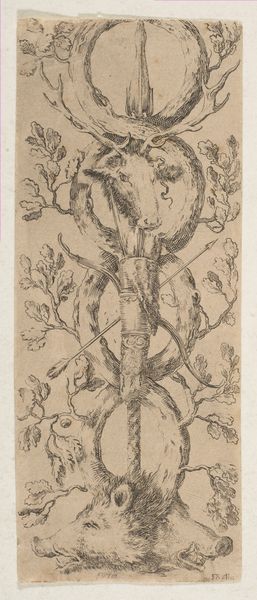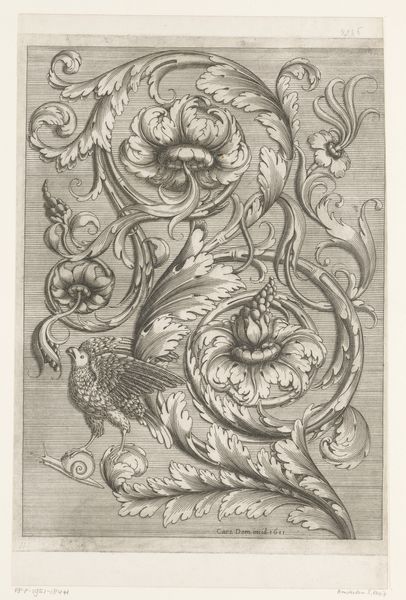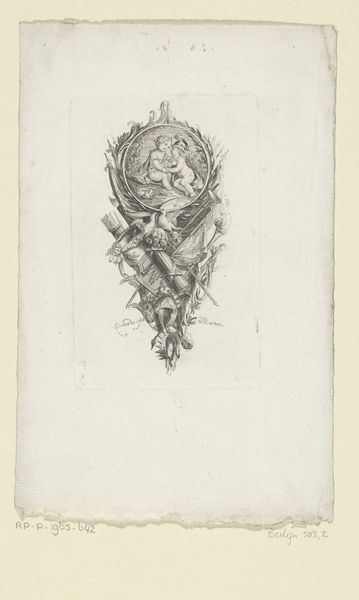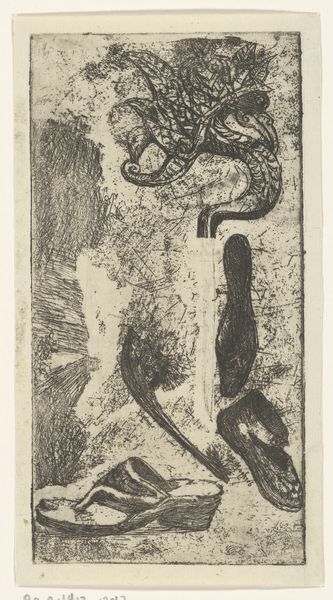
A hunting trophy, two wild boar heads above, two deer heads below, a from 'Ornaments or Grotesques' (Ornamenti o Grottesche) 1650 - 1656
0:00
0:00
drawing, ornament, print
#
drawing
#
ornament
#
ink drawing
#
pen drawing
# print
#
pen illustration
#
pen sketch
#
pencil sketch
#
junji ito style
#
ink drawing experimentation
#
pen-ink sketch
#
pen work
#
tattoo art
Dimensions: Sheet: 6 9/16 × 2 11/16 in. (16.7 × 6.8 cm)
Copyright: Public Domain
Editor: Here we have Stefano della Bella's "A hunting trophy, two wild boar heads above, two deer heads below" made sometime between 1650 and 1656. It's a print, a drawing. I find the composition really striking, with those animal heads so deliberately arranged. What do you see in this piece, considering its context? Curator: This print, part of della Bella's "Ornaments or Grotesques" series, speaks volumes about power, privilege, and the fraught relationship between humans and nature in the 17th century. It's not just a decorative piece; it's a statement of dominance, wouldn't you agree? Editor: Dominance? I hadn’t really thought about it that way. It just seemed like...taxidermy almost? Curator: Think about it – these aren’t just animals; they are trophies, symbols of successful hunts, displayed to project authority and social standing. This imagery reinforces a hierarchy where nature is subservient to the whims and desires of the powerful. Where does the power really lie? Editor: I see what you mean. So, the artist is not necessarily celebrating nature, but reflecting the social values of the time? What would be some current parallels to hunting? Curator: Exactly! Della Bella offers a glimpse into the socio-political landscape, hinting at the unequal distribution of resources and the justification of power through exploiting the natural world. How does it reflect consumerism or capitalist exploitation today, then? What is being hunted, consumed, and displayed now to shore up privilege and position? Editor: Hmmm...that's really fascinating, food? Fashion? It is interesting to reflect on how some things never change. Thanks for making me look beyond the surface. Curator: My pleasure, understanding art is also to comprehend history in progress, helping us decode these symbolic languages can challenge dominant narratives and inspire critical reflection.
Comments
No comments
Be the first to comment and join the conversation on the ultimate creative platform.
